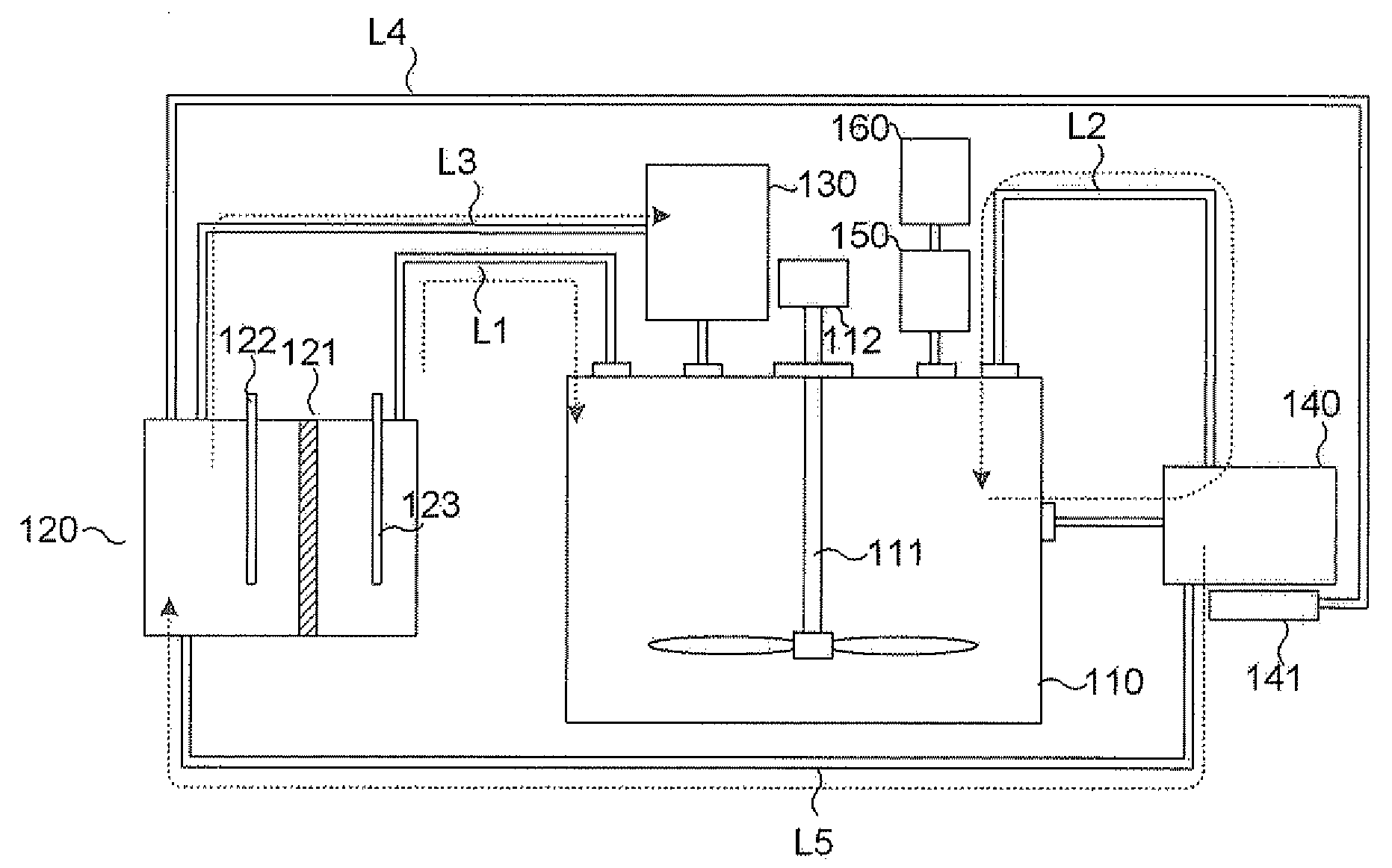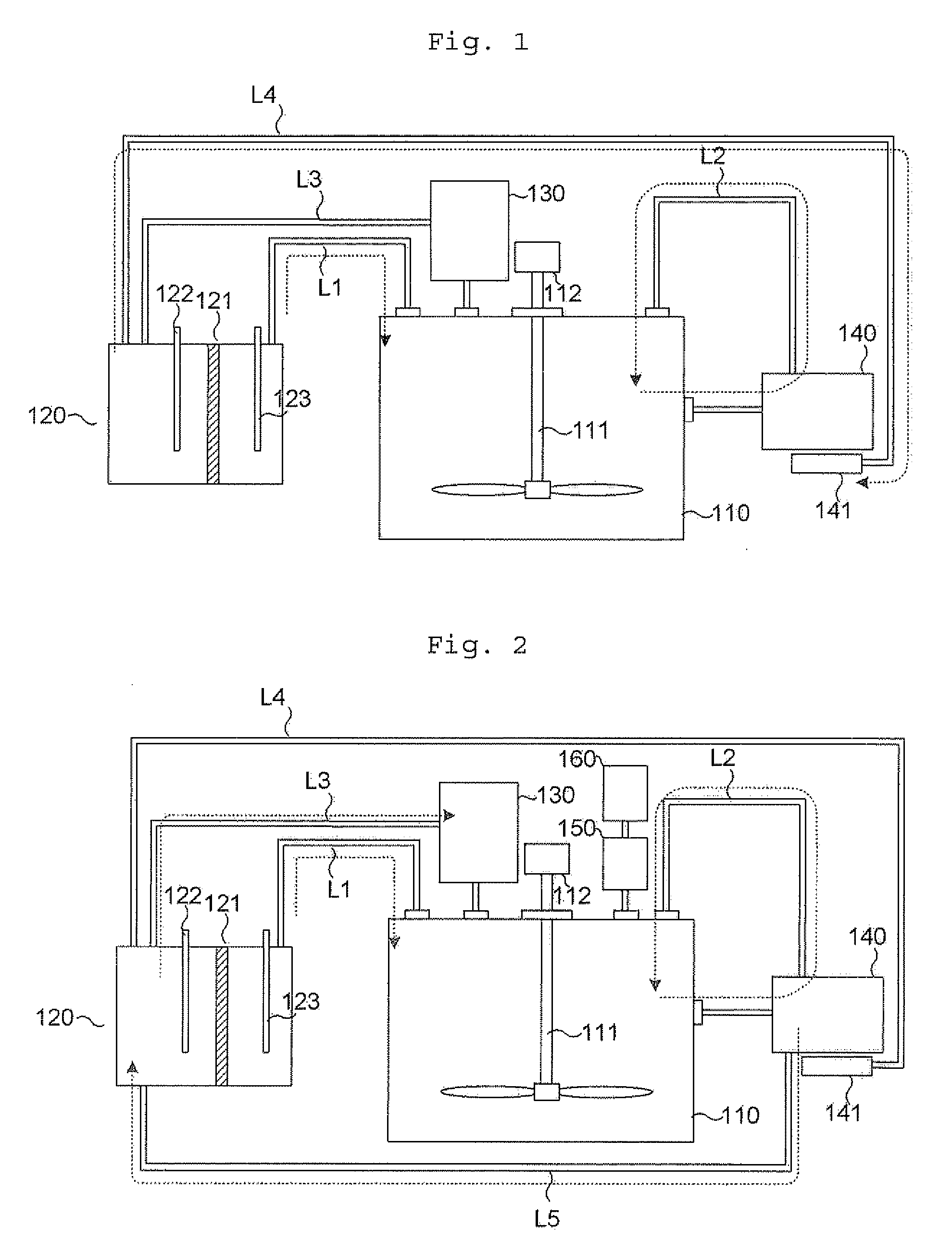Dissolution Apparatus for Noble Metals
- Summary
- Abstract
- Description
- Claims
- Application Information
AI Technical Summary
Benefits of technology
Problems solved by technology
Method used
Image
Examples
example 1
[0072]To a dissolution reactor, 1 g of Au powder with a size of 325 mesh or less and 100 mL of distilled water are introduced. Next, the liquid inside the dissolution reactor is controlled to and maintained at about pH 0.7 using hydrochloric acid provided in a pH adjusting unit. Then, a current of 0.3 A is applied to an electrolysis type chlorine producing unit containing 3 mol / L of NaCl to produce chlorine gas, which is supplied to the dissolution reactor. It is shown that the chlorine gas supplied from the electrolysis type chlorine producing unit is converted into Cl2(aq) in the dissolution reactor. After the dissolution reactor is agitated at 40° C. under 300 rpm for 5 hours, a gold solution with a concentration of 4000 ppm is obtained.
example 2
[0073]Example 1 is repeated, except that 1 g of Pt powder with a size of 0.15-0.45 μm is used as a noble metal-containing sample, and a current of 0.4 A is applied to the electrolysis type chlorine producing unit. After the dissolution reactor is agitated at 40° C. under 300 rpm for 5 hours, a platinum solution with a concentration of 4000 ppm is obtained.
example 3
[0074]To a dissolution reactor, 1 g of Ru powder with a size of about 200 mesh and 250 mL of distilled water are introduced. Next, a current of 0.6 A is applied to an electrolysis type chlorine producing unit containing 3 mol / L of NaCl to produce chlorine gas, which is supplied to the dissolution reactor. Then, the liquid inside the dissolution reactor is controlled to pH 12 using sodium hydroxide provided in a pH adjusting unit, and pH of the liquid is maintained at 3 or higher. At that time, it is shown that the chlorine gas supplied from the electrolysis type chlorine producing unit is converted into HCl, NaClO and OCl in the dissolution reactor. After the dissolution reactor is agitated at 40° C. under 300 rpm for 8 hours, a ruthenium solution with a concentration of 3300 ppm is obtained from a volatile noble metal collecting unit including a strong hydrochloric acid solution containing 20% ethyl alcohol.
PUM
| Property | Measurement | Unit |
|---|---|---|
| Acidity | aaaaa | aaaaa |
| Acidity | aaaaa | aaaaa |
| Acidity | aaaaa | aaaaa |
Abstract
Description
Claims
Application Information
 Login to View More
Login to View More - R&D
- Intellectual Property
- Life Sciences
- Materials
- Tech Scout
- Unparalleled Data Quality
- Higher Quality Content
- 60% Fewer Hallucinations
Browse by: Latest US Patents, China's latest patents, Technical Efficacy Thesaurus, Application Domain, Technology Topic, Popular Technical Reports.
© 2025 PatSnap. All rights reserved.Legal|Privacy policy|Modern Slavery Act Transparency Statement|Sitemap|About US| Contact US: help@patsnap.com


